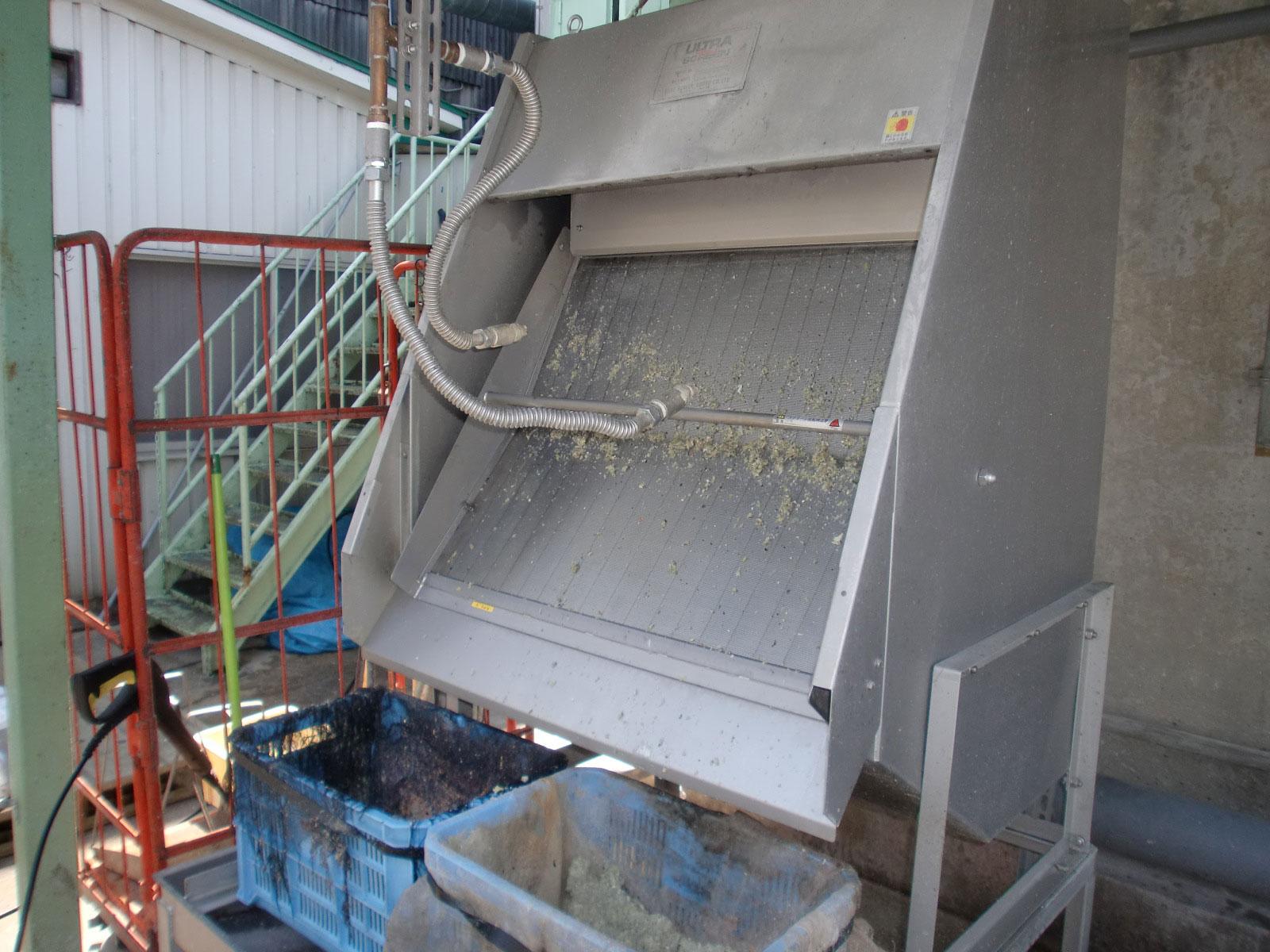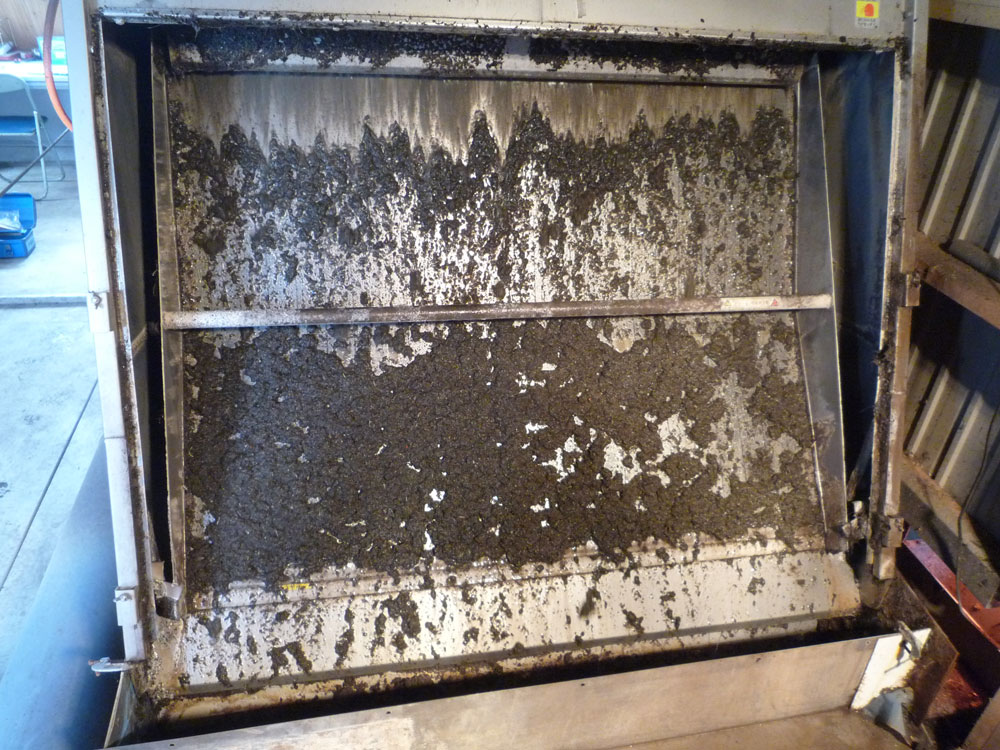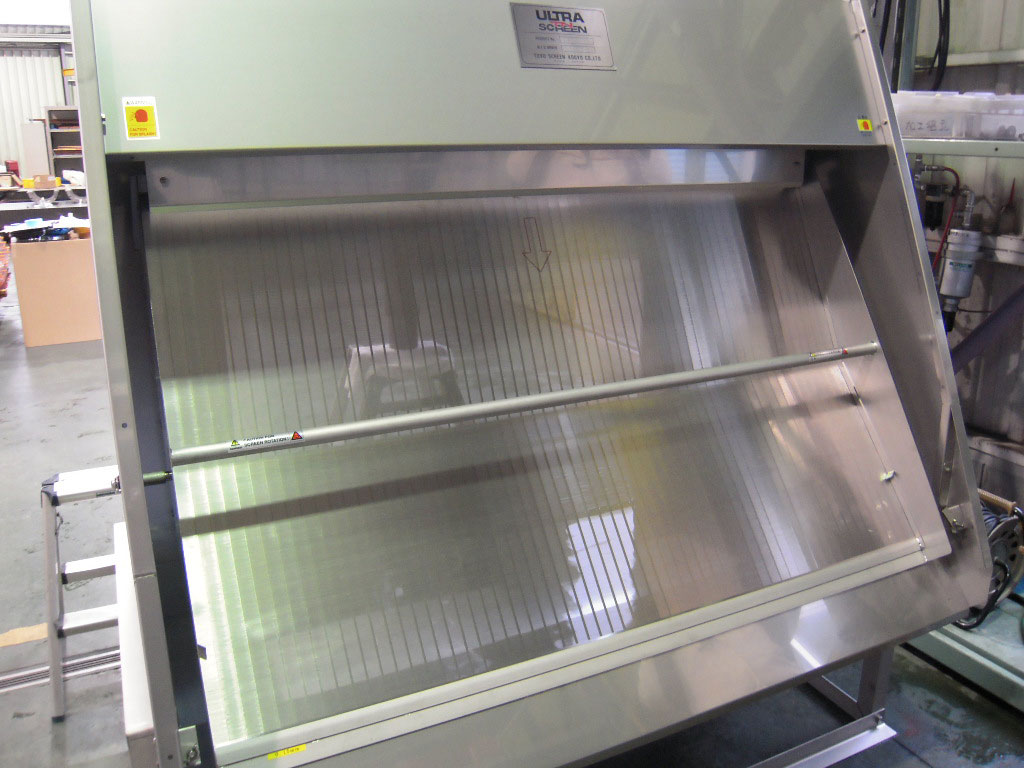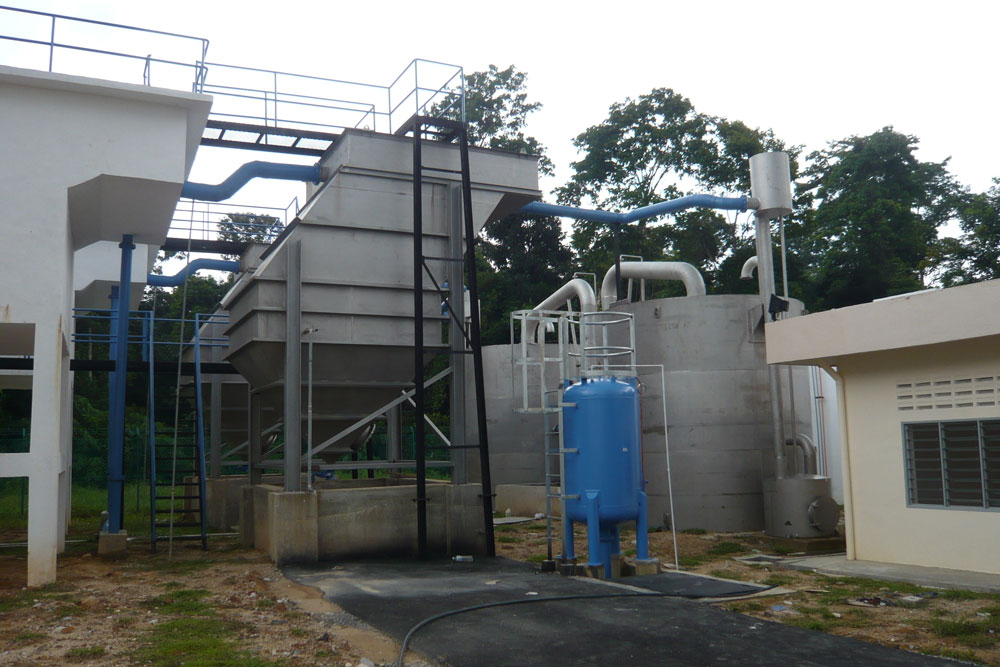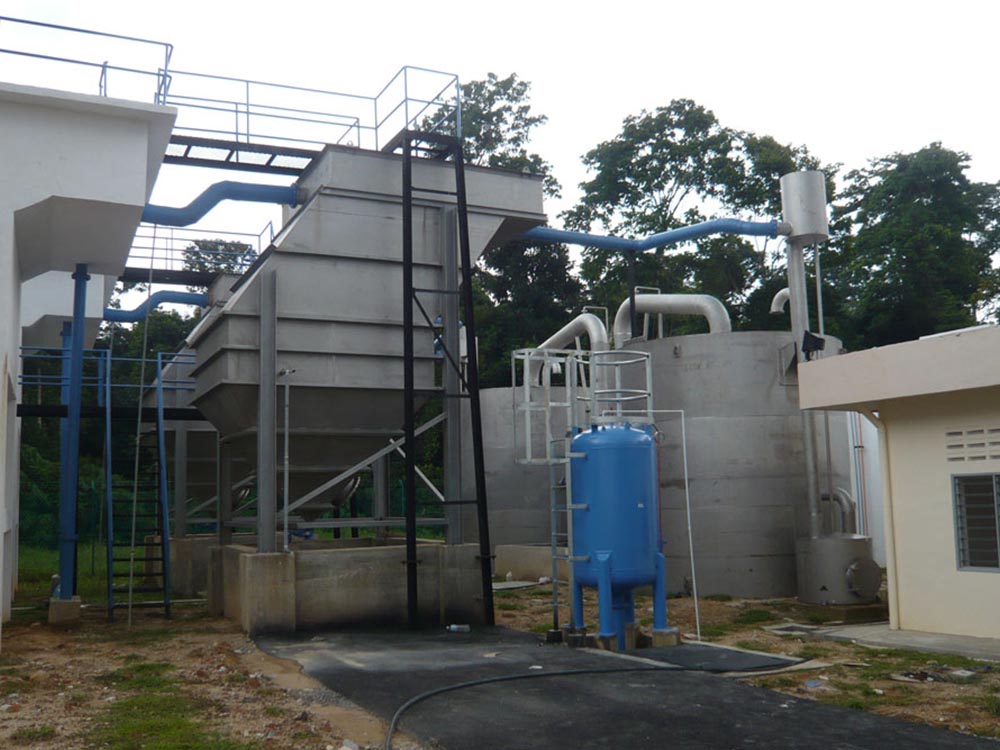Dewatering Equipment
LeveL-21 offers almost a complete range of dewatering equipment in the field of wastewater treatment.
- Static Screens
- Inclined Plate Clarifier (IPC)
- Rotary Drum Screens
Static Screens
LeveL-21 BV Static Screen is a simple, proven, highly efficient screen, designed for solid/liquid separation in municipal and industrial applications, particularly for screening fibrous and non-greasy solids. It is compact and provides high throughput. The liquid is fed to headbox, consists of deflector to minimise the turbulence, in order to create uniform gentle overflow across the screen width. A fixed baffle across the weir directs the flow as it hits the top of screen panel. The rapid sheering maximizes solids capture and minimises screen blinding. The screenings can be flow into basket or to a screw conveyor before collected in bins. The outlet can be customed fabricated according to client requirement. Thousands of static screen have been successfully in operation for many years in many countries across Asia. The robust construction gives trouble-free operation with following advantages:
- No moving parts, no motor
- Economical Screening Solution
- Fast Delivery
- Long Life Span
- Only requires periodic cleaning
- No maintenance
- Low Installation Cost
Standard features:
- Stainless Steel 304 material
- Flow distribution baffle maximizes solids capture
- Pivoting screen panel allows easy clean-up
- Flange Connection
Options:
- Stainless Steel 316
- Spray Jet Nozzles facilitates continuous cleaning
- Front cover to reduce spray aerosol
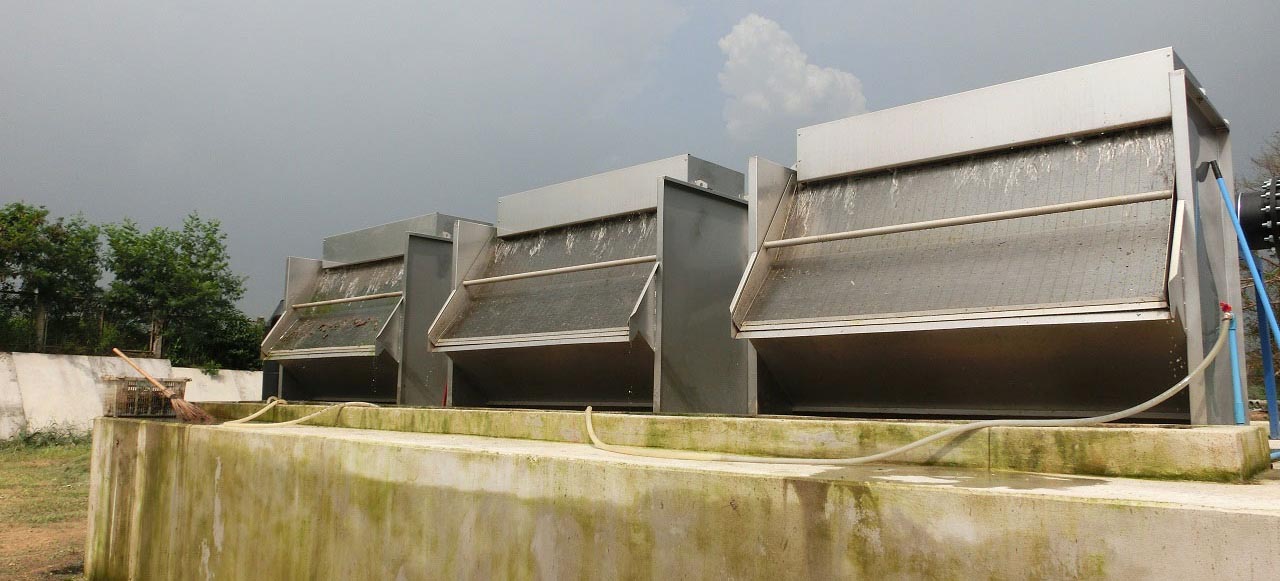
Inclined Plate Clarifier
Inclined Plate Clarifier (IPC), which also known as lamella plate clarifier is designed to remove particulates from water. IPC is ideal for applications, where the solids loading is variable and solid sizing is fine. Unlike conventional clarifiers, IPC consists of a series of closely spaced flat plates inclined at an angle of from 55 to 60 degrees from horizontal. These inclined plates provide a large effective settling area for a small footprint. The inlet stream is stilled upon entry into the clarifier. Solid particles begin to settle on the plates and begin to accumulate in collection hoppers at the bottom of the clarifier unit. The sludge is drawn off at the bottom of this hopper and the clarified water exits the unit at the top by weir. The main advantage of IPC over other clarification process is the large effective settling area caused by the use of inclined plates, which improves the operating conditions of the clarifiers in a number of ways. The unit is more compact usually requiring only 65-80 % of the area of clarifiers operating without inclined plates. Therefore, where site footprint constraints are of concern a lamella clarifier system is preferred. The reduced required area allows the possibility for the clarifiers to be located and operated indoor, reducing some of the common problems of algae growth, clogging due to blowing debris accumulation and odour control, that occur when the machinery is outdoors. Operation within an enclosed space also allows for a better control of operating temperature and pressure conditions.
Applications:
- Potable water
- Process water
- Industrial effluent
- Scrubber wastewater
Benefits:
- Low capital cost
- Compact footprint
- Easy installation
- Simple maintenance
Standard features:
- FRP or SS304 material
- Flange connection
- Acess platform (option)
- Flash mixer chamber (option)
- Chemical feed system (option)
Rotary Drum Screens
The Rotary Drum Screens will fish and remove the scum, short fiber and suspended matter from the water intake, and squeeze them dry and press them for dehydration before discharging. It is suitable for high precision treatment, wastewater treatment with small gate gap and shallow channel depth.
The drive equipment of the drum fine screen is located on the upper part of the mechanical fine screen wall, and the main materials are stainless steel plates. The power system is motor, and the speed reduction equipment is composed of cycloid reducer reducer and primary chain drive. The transmission system is high efficiency, low noise, stable and reliable operation. The rotating shaft has sufficient compressive strength and bending rigidity to bear the load of bending and torsion together. Moreover, the reducer and chain drive equipment of the dynamic equipment are provided with maintenance covers, which is convenient for maintenance and inspection.
Area of application of Rotary Drum Screens:
- Wastewater treatment for food and processing industry.
- Treatment of wastewater with a high content of solids including fibers ,wool, feathers, and films.
- Industrial and domestic wastewater treatment plants.
Effective fine treatment, reliability and high throughput make Rotary Drum Screens a leader in their class.
The perforated sieve or woven mesh used to manufacture the filter cloth allows efficient removal of impurities from drains. The screens are
characterized by low consumption of flushing water and electricity due to the use of energy-efficient components and a well-thought-out
control system.
Design advantages of LeveL-21 Rotary Drum Screens:
- Fine mechanical wastewater treatment with the ability to catch even such specific – contaminants such as feathers, fluff, wool, hair, films,
seed coats due to the use of slotted perforated fabric or woven mesh; - The use of woven mesh with a cell of 0.5-1 mm allows for the effective extraction of specific fine particle contaminants from wastewater, which is especially important for the subsequent biological wastewater treatment using MBR technology;
- The reliability of the equipment is ensured by the applied design solutions: direct drive of the drum, support rollers of the drum on rolling bearings, and most of the bearings are located outside the housing, closed housing, etc.
- Cleaning of the screen filter cloth surface is carried out by a mechanical brush installed on the outer surface of the drum. Due to the use of the brush adjustment mechanism, its tight fit is achieved over the entire surface of the drum, which guarantees high-quality cleaning of the filtering surface.
- The presence of the flushing nozzles installed outside the drum provides additional thorough cleaning of the filtering surface and guarantees trouble-free operation of the screen even when treating wastewater containing fat and oil;
- The compact design of the screen combined with high throughput makes it possible to organize effective mechanical cleaning in a small area, which is extremely important when using container-type block treatment facilities;
- The elongated flights of the spiral of the conveyor screw will cope even with a very large amount of debris extracted from the drain.
- Advanced automation: various operating modes, frequency regulation of the drum, flow sensor, synchronization communication with other types of equipment; it is also possible to install remote control units;
- The presence of an overflow in the screen design allows avoiding an emergency overflow in emergency situations.
- Low consumption of electricity and flushing water.
- Wide range of additional options.
- The fully enclosed screen design prevents the spread of unpleasant odors and dangerous gases.

